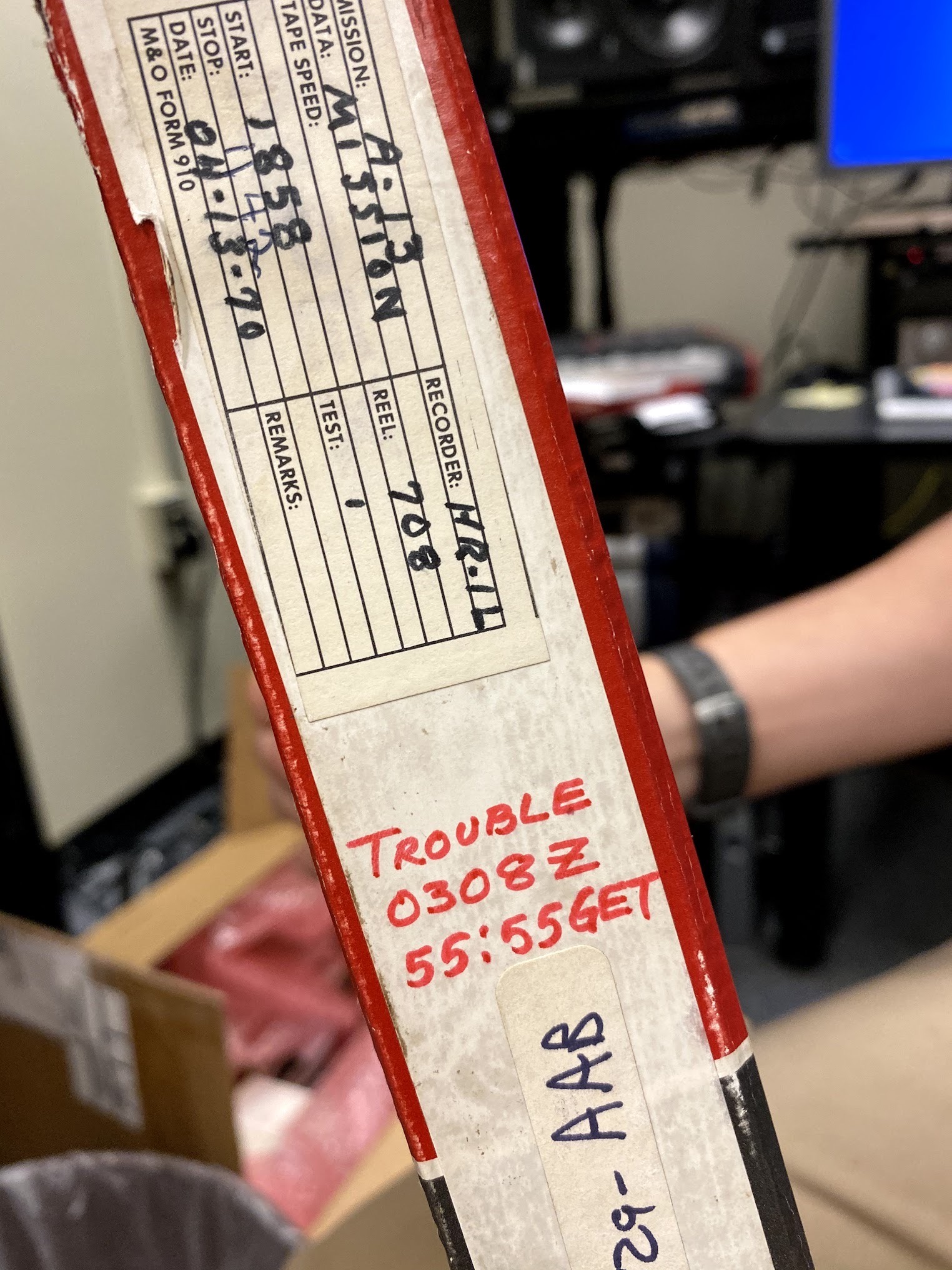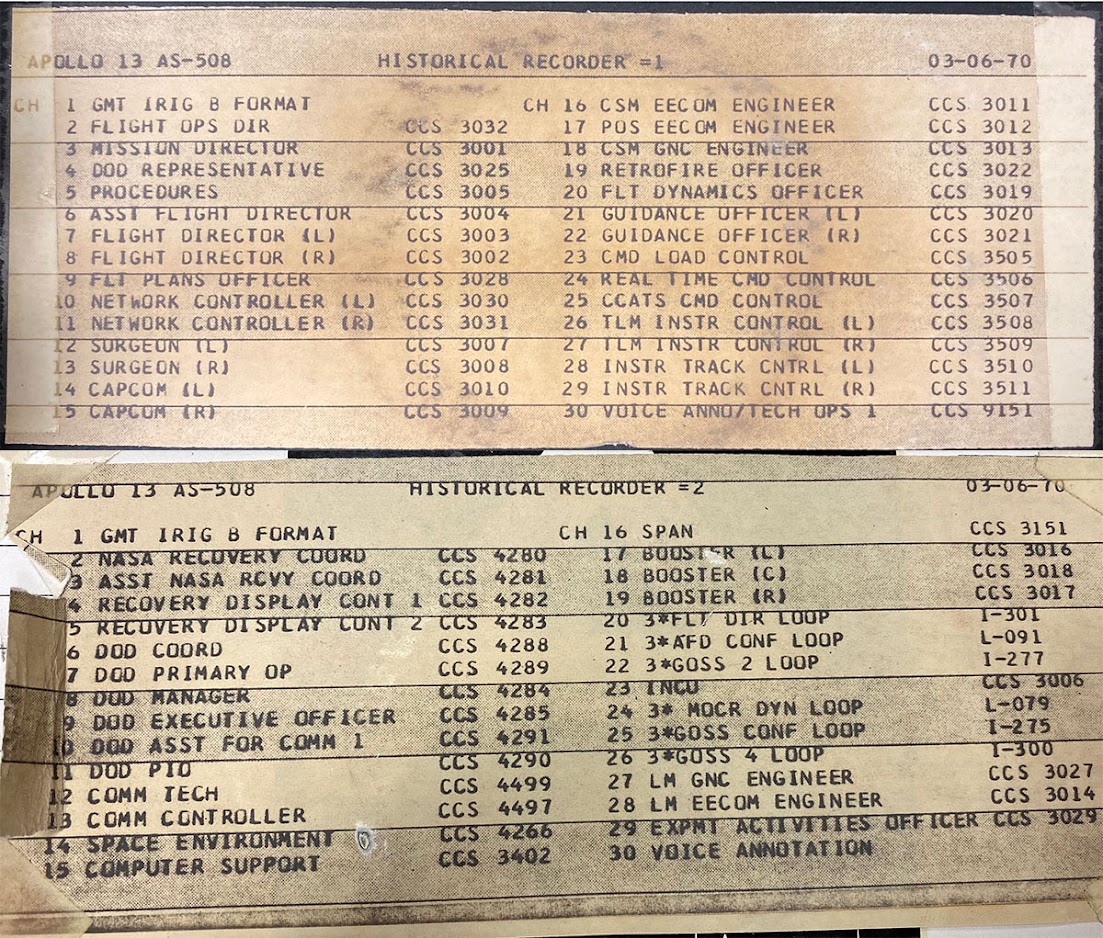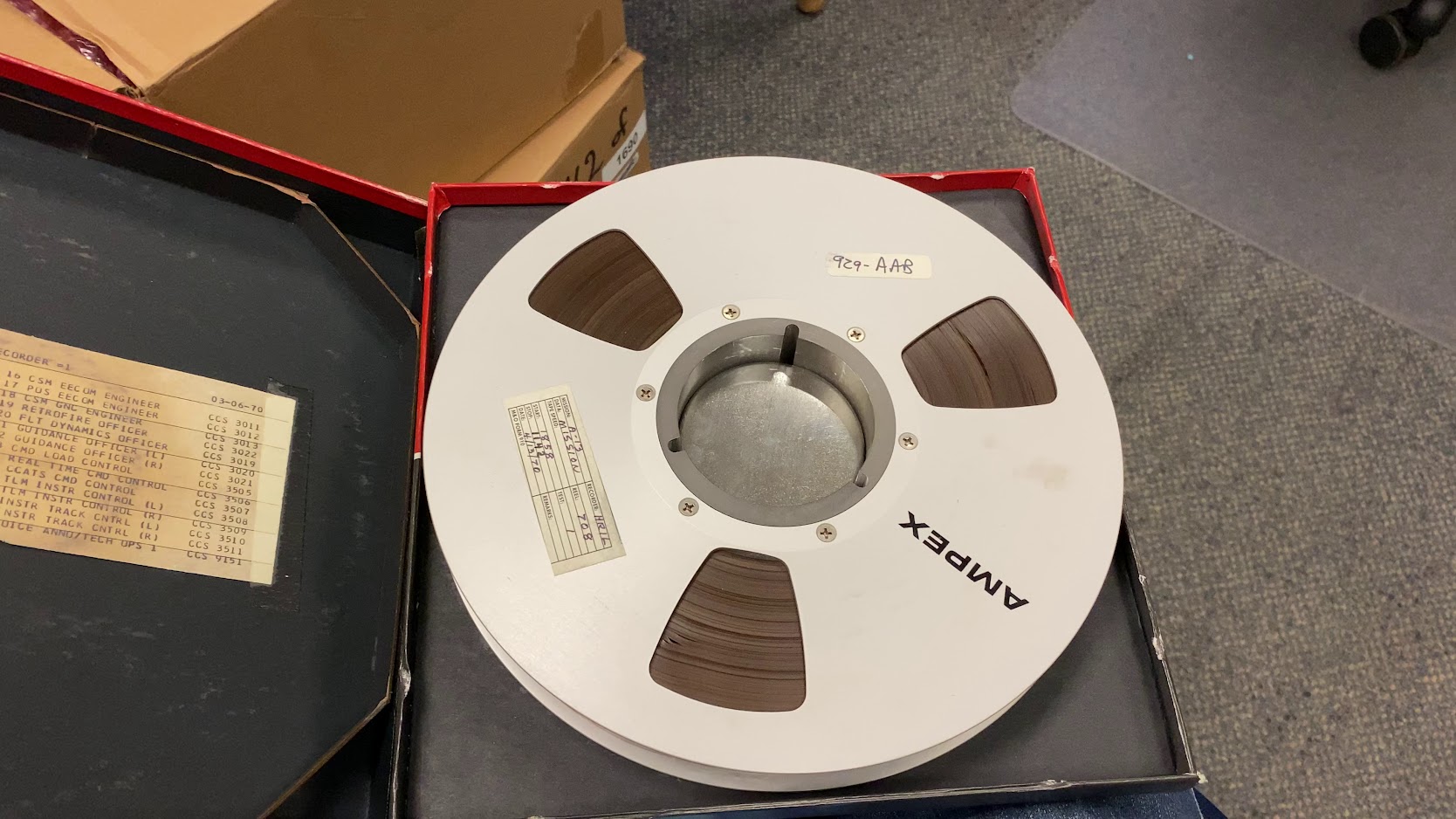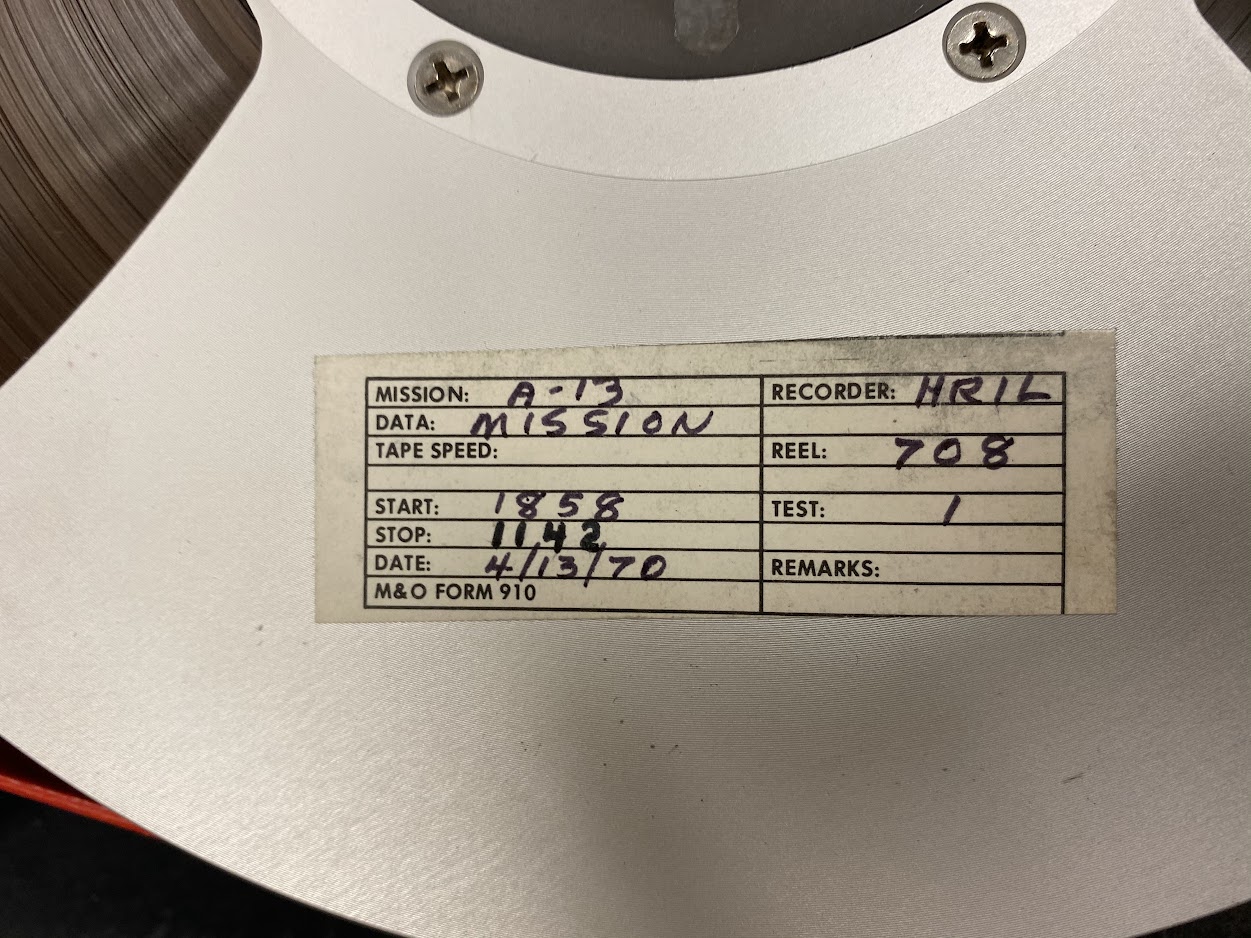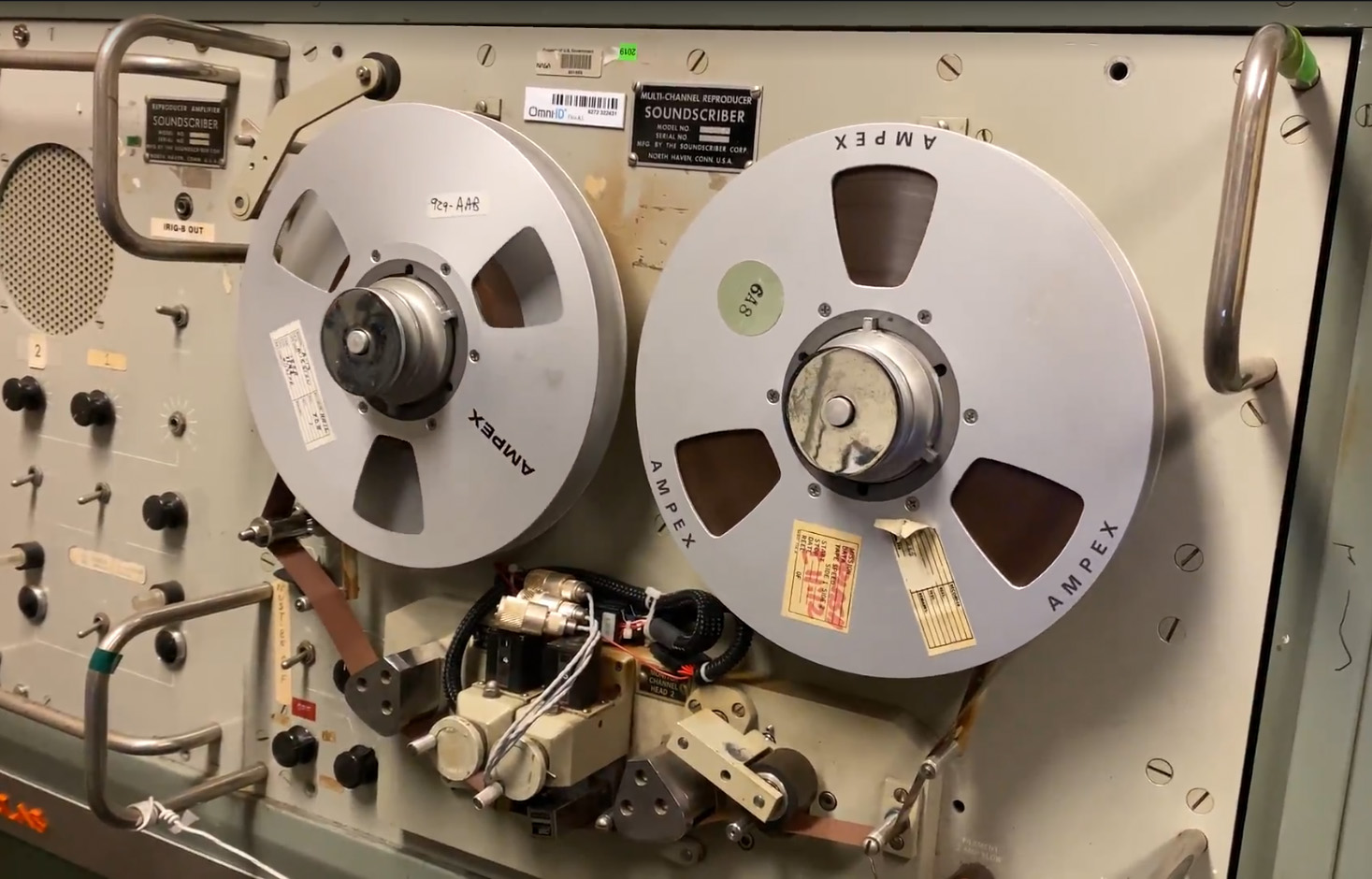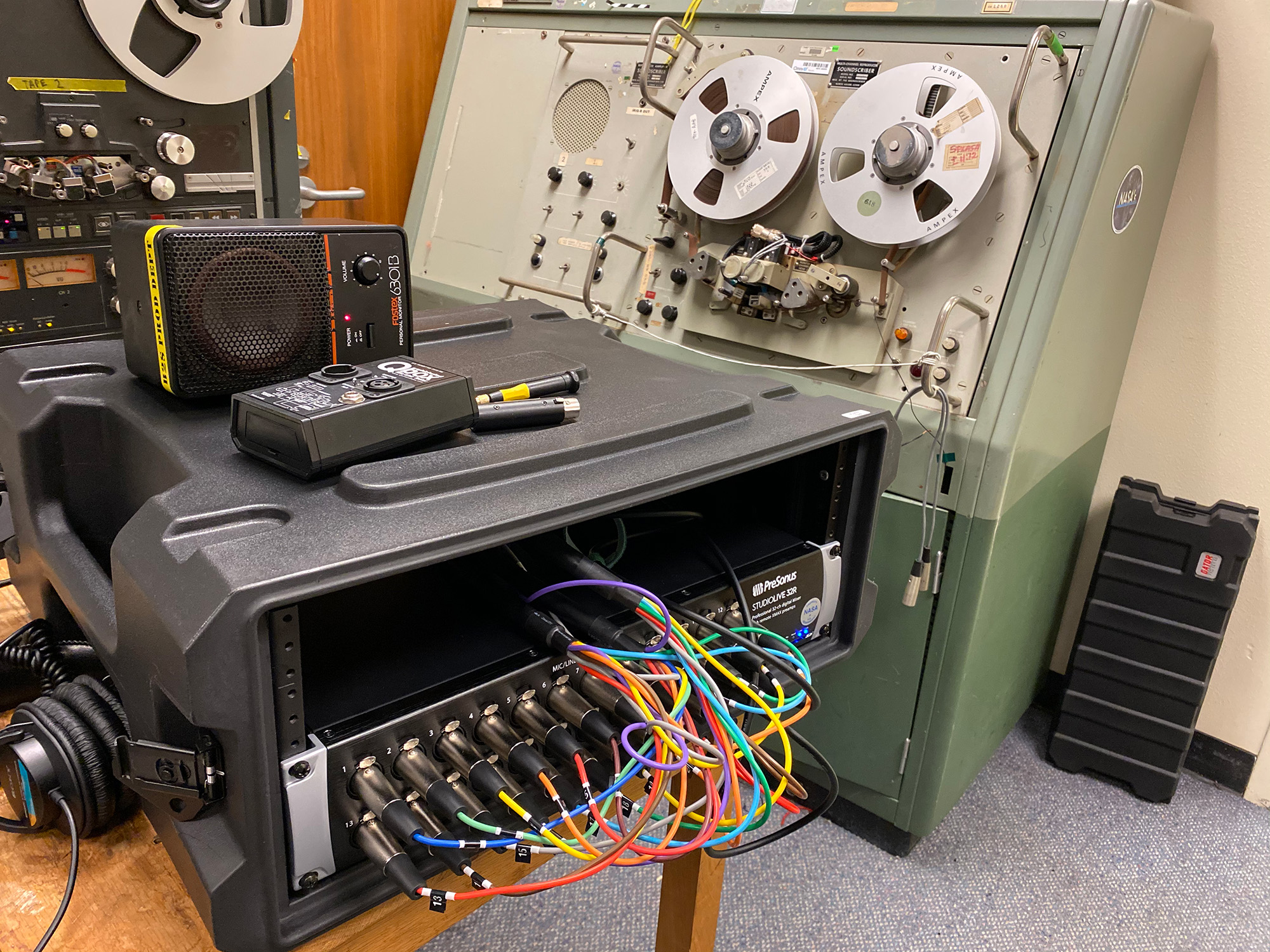
The tapes containing this audio were digitized in a multi-year effort funded by the National Science Foundation under the guidance of Prof. John Hansen at UT Dallas. The original tranche of transfers were supplied to the Apollo in Real time team in 2017 along with all 11,000 hours of Apollo 11 audio.
The mission tapes surrounding the Apollo 13 explosion were later discovered in the National Archives, having been separated from the others for many decades, due to their use in the post-mission congressional investigation tasked to find the cause of the on-board explosion. They were digitized by NASA's Johnson Space Center (JSC) in February and March, 2020 with the help of JSC Historical Preservation Officer, Sandra Tetley.
The Soundscriber machine that played back each tape for digitization is the only remaining machine of its kind in the world. It was built around the time of the Apollo missions and even though it was refurbished prior to digitization, it still introduced severe distortions to the audio during the playback process and subsequent digital files.
These artifacts, known as "wow" (a long term, random drift that makes the ~16 hour long tapes play back up to an hour longer than originally recorded) and "flutter" (a short term drift that makes the sounds warble in pitch about three times a second) were corrected using a custom algorithm developed by Apollo in Real Time team member, Jeremy Cooper. The resulting digital files are a near-perfect representation of what was originally recorded on the tapes at the time of the mission. Since they contain no time variation and contain an original timing signal in a standard format (known as an IRIG-B), the corrected files as a whole are the primary source material that the team relies upon when publishing the exact timing of mission events, including the synchronization of video sources in the timeline. They are indisputably historically accurate.
Unlike the main space-to-ground transcript (left), which is based upon the original mission transcript that was manually typewritten in 1970, the transcripts provided here have been generated using the "large-v3" Whisper model.
The Whisper AI processing of the 7,200 hours of Mission Control audio required over 750 hours of computer time. The resulting transcripts contain 3,936,510 utterances, consisting of 37,503,659 words, totaling 199MB of text. Download the transcripts for all mission control channels in a single file here (version 2024-10-18).
As valuable as these results are, they remain imperfect. The Apollo in Real Time team will not be endeavoring to manually correct these generated transcripts. Instead, as automated transcription technology improves over time the audio will be re-processed, replacing these transcripts.
The Apollo in Real Time team is grateful to the OpenAI team for the development and open-source release of Whisper.
